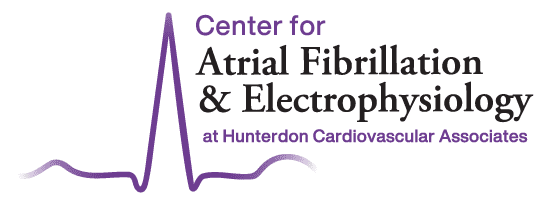What is Cardiac Arrhythmia?
A cardiac arrhythmia occurs when your heart beats too quickly, too slowly, or in an irregular pattern. Atrial fibrillation (AFib) is the most common type of arrhythmia. It is an erratic heartbeat that causes the upper chambers of your heart to beat chaotically and out of rhythm with your lower chambers (called ventricles), affecting blood flow.
In addition to AFib, there are several other types of arrhythmias:
- Atrial flutter – a fast heartbeat that causes the upper chambers (atria) of your heart to beat regularly, but too quickly.
- Bradycardia – a slow heartbeat that is less than 60 beats per minute.
- Supraventricular arrhythmias – an erratic or abnormally fast heartbeat that affects the upper chambers of the heart.
- Tachycardia – this is a very fast heartbeat that comes and goes, which can cause symptoms such as dizziness, shortness of breath, or racing pulse.
- Ventricular fibrillation – a very fast, chaotic heartbeat in the lower chambers of the heart that can cause sudden cardiac arrest.
- Brugada syndrome: genetic disorder that causes a dangerous irregular heartbeat and can result in cardiac arrest
- Ventricular tachycardia: three or more heartbeats in a row at a rate of more than 100 beats per minute
- Long QT syndrome (LQTS): can cause fast, chaotic heartbeats; acquired or congenital; often misdiagnosed as seizure disorder
Signs and Symptoms
Some common signs and symptoms of cardiac arrhythmias are:
- Dizziness or feeling faint
- Chest pain
- Fatigue or tiredness
- Shortness of breath or feeling like you are being smothered
- Palpitations, a fluttering sensation in the chest caused by a racing heartbeat
Diagnosis
Arrhythmias are diagnosed by one of our expert electrophysiologists (a cardiologist that has additional specialized training in the diagnosis and treatment of heart rhythm disorders.) After performing a physical examination and evaluating the symptoms, the electrophysiologist may perform a variety of state-of-the-art diagnostic tests to help confirm the presence of an arrhythmia. These tests include:
- Electrocardiogram (ECG or EKG) – this test uses small patches (electrodes) that are stuck to the skin on your chest, arms, and legs. The electrodes are connected to an ECG machine and the results are then recorded onto graph paper.
- Echocardiogram – this uses ultrasound to determine if there is a heart muscle or valve disease that is causing an arrhythmia.
- Stress test – this test uses exercise to see if arrhythmias worsen when physical activity takes place. It can also help determine other underlying heart diseases associated with arrhythmia.
- Holter monitor – for 24 to 48 hours, this portable device continuously records the heart’s electrical activity while you go about your daily activities.
- Implantable loop recorder – this device monitors your heart rhythm for three to five years and allows it to record information that other, more temporary tests, may miss.
- Cardiac electrophysiology (EP) study or testing – this test is used to diagnose arrhythmias by assessing the heart’s electrical system or activity.
Treatment and Management
Cardiac arrhythmias can be treated by making lifestyle changes such as limiting alcohol consumption, limiting caffeine or other stimulants, quitting smoking, and by avoiding activities that trigger irregular heart rhythms. Medications like beta blockers or calcium channel antagonists to slow down the heart rate or block electrical signals from spreading through the heart are also available as viable treatment options. Your electrophysiologist will be able to help you decide which treatments are best for your individual needs.
When conservative treatments are ineffective, the specialists at the Center for Atrial Fibrillation and Electrophysiology can perform procedures with cutting-edge technology such as:
- Electrical cardioversion – this delivers an electrical current to your chest wall and resets your heart rhythm.
- Cardiac ablation – energy is delivered through a catheter to help correct the arrhythmia.
- Insertion of a pacemaker – this implanted device helps your heart rate from becoming too slow.
- Implantable cardiac defibrillator – this is a small, battery-powered device that is placed under the skin to monitor your heartbeat, sending an electrical shock to restore normal rhythms when abnormal rhythms occur.
- WATCHMAN implantation – this device is permanently implanted in a procedure that closes off the part of your heart that allows blood clots to escape, reducing the risk of stroke.
The Center for Atrial Fibrillation and Electrophysiology at HCA is a dedicated and specialized care facility that will help you manage your individual symptoms in a personalized care environment. Contact us today to request an appointment with one of our specialists.
